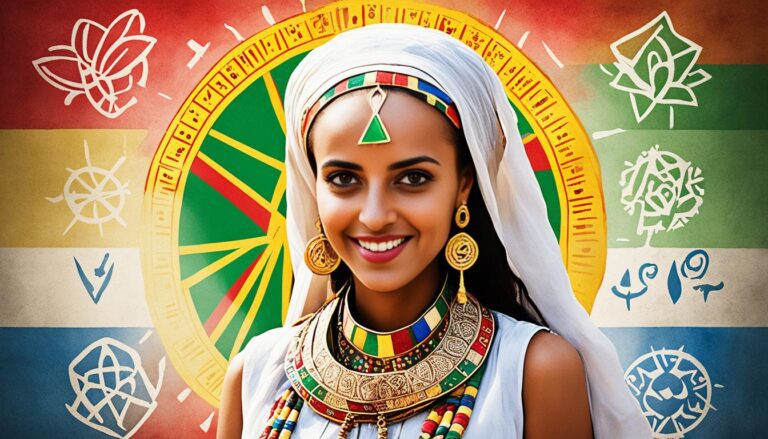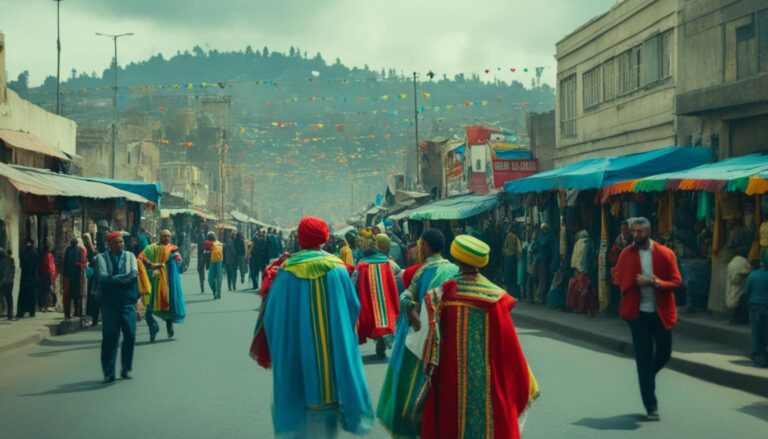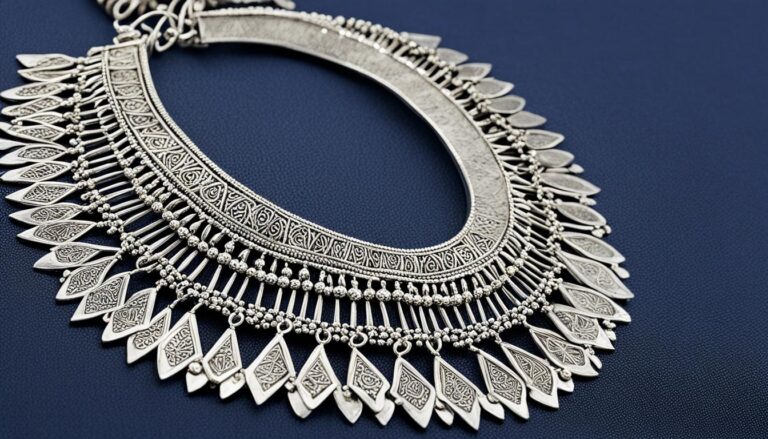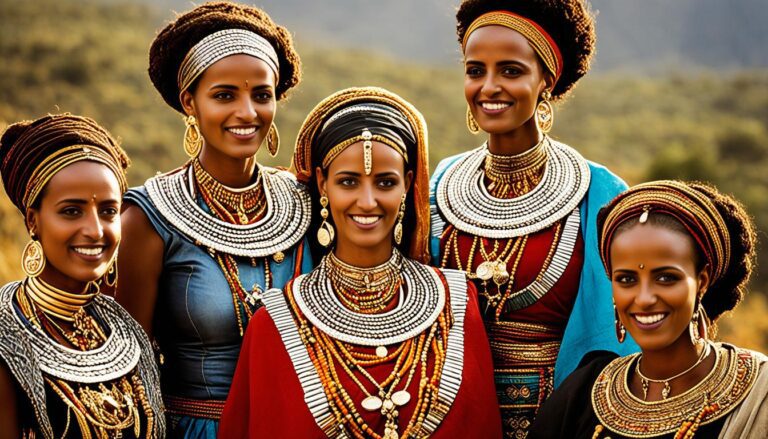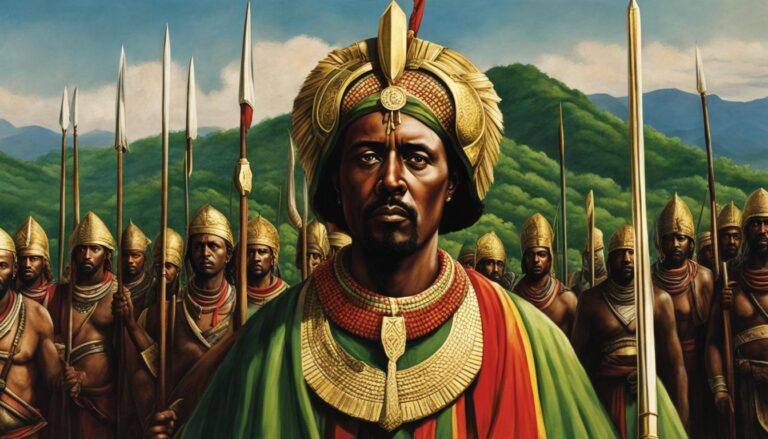What Are Some Traditional Ethiopian Clothing Styles?
Traditional Ethiopian clothing styles: A historical overview
Ethiopian clothing has a rich history that dates back centuries, reflecting the diverse cultural heritage of the country. Traditional clothing in Ethiopia varies by region, with each ethnic group showcasing unique styles and designs. One of the most iconic pieces of Ethiopian attire is the Habesha Kemis, a long flowing dress worn by women. This garment is typically made from white cotton fabric and features colorful embroidery around the neckline and hem. The intricate designs on the Habesha Kemis often hold symbolic meaning, representing aspects of Ethiopian culture and history.
Another traditional Ethiopian clothing style is the Netela, a large rectangular shawl that is worn by both men and women. The Netela is usually made from lightweight cotton or chiffon and is draped over the shoulders as a form of modesty. This versatile garment can also be used as a headscarf or baby carrier, making it a practical and culturally significant piece of clothing in Ethiopia.
In addition to the Habesha Kemis and Netela, men in Ethiopia often wear a knee-length garment called a Gabi. This wraparound cloth is similar to a toga and is commonly worn during religious ceremonies and formal occasions. The Gabi is typically made from white cotton fabric and is intricately woven with colorful borders, adding a touch of elegance to the attire.
Ethiopian clothing styles are not only fashionable but also play a vital role in preserving cultural identity and heritage. The intricate patterns, vibrant colors, and handwoven fabrics used in traditional Ethiopian attire reflect the country’s artistic craftsmanship and attention to detail. These garments are more than just clothing; they are a representation of Ethiopia’s cultural pride and resilience throughout history.
Traditional Ethiopian clothing styles are a source of cultural pride and identity, showcasing the country’s rich heritage and diversity. From the elegant Habesha Kemis to the versatile Netela and the dignified Gabi, each garment tells a unique story that is deeply rooted in Ethiopian tradition. Embracing and celebrating these traditional clothing styles is not only a way to honor the past but also to ensure that Ethiopia’s cultural legacy continues to thrive for generations to come.
Traditional Ethiopian Clothing: Colors and Patterns That Define Culture
When it comes to traditional Ethiopian clothing, one cannot overlook the vibrant colors and intricate patterns that hold significant cultural meanings. Ethiopian clothing is a reflection of the country’s rich history, diverse ethnic groups, and unique traditions. Let’s delve into the captivating world of colors and patterns in traditional Ethiopian attire.
Colors play a crucial role in traditional Ethiopian clothing. Each color used holds symbolic significance and represents different aspects of life. For example, white symbolizes peace, purity, and innocence, while yellow represents warmth and prosperity. Red is often associated with power, fertility, and love, and green symbolizes hope, youth, and growth. These colors are intricately woven into the fabric of Ethiopian clothing, creating visually stunning garments that tell stories of heritage and beliefs.
Patterns in Ethiopian clothing are another vital aspect that distinguishes one ethnic group from another. From intricate embroidery to handwoven designs, Ethiopian patterns are a testament to the craftsmanship and creativity of its people. Geometric patterns such as diamonds, chevrons, and zigzags are commonly found in Ethiopian textiles, each carrying its meaning and symbolism. These patterns are not merely decorative but serve as a way to express identity, social status, and cultural pride.
Moreover, the way colors and patterns are combined in Ethiopian clothing is a reflection of the wearer’s identity and heritage. Different regions of Ethiopia have their unique styles and preferences when it comes to colors and patterns, making it easy to identify where someone is from based on their attire. Whether it’s the bold stripes of the Oromo people or the intricate cross patterns of the Amhara, Ethiopian clothing is a visual representation of the country’s diversity and cultural richness.
Colors and patterns in traditional Ethiopian clothing are not just elements of style but are deeply rooted in the country’s history, traditions, and beliefs. They serve as a means of cultural expression, storytelling, and identity, making Ethiopian attire truly unique and iconic. The next time you see a person adorned in traditional Ethiopian clothing, take a closer look at the colors and patterns they wear – you might just uncover a fascinating story woven into the fabric itself.
Significance of Traditional Ethiopian Clothing in Cultural Events
Traditional Ethiopian clothing holds immense significance in various cultural events, reflecting the country’s rich heritage and diverse cultural tapestry. Ethiopian garments are deeply rooted in the country’s history, with each piece of clothing telling a unique story that is passed down through generations. These traditional outfits play a crucial role in preserving the country’s cultural identity and are an integral part of Ethiopian celebrations and ceremonies.
Ethiopian cultural events such as weddings, religious festivals, and holidays showcase a colorful display of traditional clothing. One of the most iconic pieces of traditional Ethiopian attire is the "Kemis" for women and the "Shamma" for men. The "Kemis" is a long flowing dress made from cotton fabric, often beautifully embroidered with intricate designs and vibrant colors. On the other hand, the "Shamma" is a toga-like garment made from cotton cloth that is worn over the shoulder.
The colors and patterns used in traditional Ethiopian clothing are not just for aesthetic purposes but also hold symbolic meanings. For example, the color white symbolizes peace, while yellow represents hope and friendship. Patterns such as stripes, crosses, and geometric shapes are commonly found in Ethiopian garments and often signify cultural heritage and spiritual beliefs.
During cultural events like the Timket festival, which celebrates the Epiphany, Ethiopians wear their traditional clothing with pride and honor. The vibrant colors and intricate designs of their attire reflect the joy and spirituality of the occasion. Similarly, weddings in Ethiopia are grand celebrations where brides and grooms adorn themselves in elaborate traditional garments to signify their cultural roots and the sanctity of marriage.
In Ethiopian culture, clothing is more than just fabric; it is a symbol of identity, unity, and pride. The intricate craftsmanship and attention to detail in traditional Ethiopian attire showcase the skill and artistry of local artisans. Through wearing traditional clothing in cultural events, Ethiopians not only pay homage to their ancestors but also express a deep connection to their roots and heritage.
Traditional Ethiopian clothing plays a central role in cultural events by preserving the country’s rich heritage, reflecting symbolic meanings through colors and patterns, and instilling a sense of pride and identity among the Ethiopian people. These garments are not just fabrics; they are a powerful expression of cultural values and traditions that have withstood the test of time.
Impact of Ethiopian Geography and Climate on Traditional Clothing Styles
Ethiopia’s diverse geography and varying climatic conditions have significantly influenced the traditional clothing styles worn by its people for centuries. The country’s landscape, which includes highlands, plateaus, and lowlands, has played a crucial role in shaping the types of fabrics, designs, and garments that are prevalent in different regions.
In the highlands of Ethiopia, where temperatures are relatively cooler, traditional clothing is often made from heavier fabrics such as cotton and wool to provide warmth. The iconic shamma, a lightweight cotton wrap worn by both men and women, is commonly seen in these areas. The shawl-like garment is draped over the shoulders and serves as protection against the chilly mountain air.
Conversely, in the lowland regions where temperatures are warmer, lighter fabrics such as linen and cotton are preferred for traditional attire. The kuta, a long, loose-fitting robe, is a popular choice in these areas due to its breathability and comfort in hot weather. The loose silhouette allows for air circulation, keeping the wearer cool in the scorching temperatures of the lowlands.
Moreover, the availability of natural resources like cotton and leather in different parts of Ethiopia has influenced the choice of materials used in traditional clothing. For instance, the use of leather is prominent among certain pastoral communities, where garments like leather tunics and skirts are worn for their durability and suitability for a nomadic lifestyle.
The distinct climate zones within Ethiopia have also influenced the color palette and decorative elements in traditional clothing. In the cooler highlands, earthy tones such as browns, greys, and blacks are prevalent, reflecting the natural hues of the landscape. On the other hand, the vibrant colors and intricate patterns seen in clothing from the lowland regions are often inspired by the rich biodiversity and cultural diversity of these areas.
Ethiopian geography and climate have played a pivotal role in shaping the traditional clothing styles that are still cherished and passed down through generations. The unique combination of materials, designs, and colors not only reflects the country’s rich heritage but also serves a functional purpose by catering to the varying weather conditions experienced across different regions of Ethiopia.
Traditional Ethiopian clothing styles have a rich history that dates back centuries. From the intricate designs to the vibrant colors, Ethiopian clothing reflects the diverse cultural heritage of the country. In recent years, there has been a growing trend of modern adaptations and fusion of traditional Ethiopian clothing styles. This fusion has not only helped preserve the cultural significance of these garments but has also made them more accessible to a wider audience.
One of the most notable features of traditional Ethiopian clothing is the use of intricate patterns and designs. These patterns are often handwoven into the fabric using ancient techniques passed down through generations. The colorful embroidery and beadwork are a hallmark of Ethiopian clothing, adding a unique and eye-catching aesthetic to the garments. These traditional designs are not only visually stunning but also hold deep cultural significance, with many patterns representing symbols of fertility, protection, or religious beliefs.
Moreover, the fabrics used in traditional Ethiopian clothing are often sourced locally, with cotton and woven fabrics being the most commonly used materials. The diversity of Ethiopian geography and climate has influenced the choice of fabrics, with lighter fabrics being favored in warmer regions and heavier fabrics in colder climates. The traditional clothing styles vary from region to region, with each area having its own unique designs and fabrics that reflect the local customs and traditions.
In recent years, there has been a resurgence of interest in traditional Ethiopian clothing styles, with many designers incorporating these elements into modern fashion trends. This fusion of traditional and contemporary styles has resulted in a new wave of Ethiopian-inspired clothing that is both fashionable and culturally relevant. From the runways of international fashion shows to the streets of Addis Ababa, traditional Ethiopian clothing styles continue to captivate audiences around the world.
The modern adaptations and fusion of traditional Ethiopian clothing trends have helped preserve the rich cultural heritage of the country while also introducing these styles to a global audience. By blending traditional techniques with modern design elements, Ethiopian designers are creating a new wave of fashion that celebrates the past while looking towards the future. With its vibrant colors, intricate patterns, and cultural significance, traditional Ethiopian clothing styles are truly a feast for the senses.
Conclusion
Reflecting on the rich history of traditional Ethiopian clothing styles, it becomes evident that these garments are not merely fabrics but representations of a nation’s heritage and identity. The intricate designs, vibrant colors, and symbolic patterns found in Ethiopian clothing are deeply rooted in the country’s diverse cultural tapestry, reflecting its ancient traditions and customs. Throughout history, Ethiopian clothing has evolved as a reflection of changing times while preserving its unique cultural essence.
The captivating colors and patterns adorning traditional Ethiopian clothing are more than just aesthetic choices; they carry profound cultural and symbolic meanings. From the dazzling whites symbolizing purity to the fiery reds signifying power and fertility, each hue tells a story of tradition and heritage. The intricate embroidery and handwoven fabrics often feature geometric motifs, religious symbols, and ancestral designs, creating visually stunning attire that speaks volumes about Ethiopia’s rich cultural heritage.
Traditional Ethiopian clothing plays a pivotal role in cultural events and ceremonies, serving as a visual expression of the wearer’s identity and status. Whether donned during weddings, religious celebrations, or festive gatherings, these garments hold deep cultural significance and are integral to preserving Ethiopia’s cultural heritage. The elaborate attire worn during such occasions not only showcases the country’s sartorial splendor but also reinforces a sense of community and shared traditions among its people.
The diverse geography and climatic conditions of Ethiopia have significantly influenced the country’s clothing styles and materials. From the cool highlands to the arid lowlands, Ethiopian clothing is designed to suit the environmental demands of each region. The use of breathable cotton fabrics, lightweight garments, and layered ensembles reflects a deep understanding of the local climate and a practical approach to dressing for comfort and protection.
In recent times, traditional Ethiopian clothing styles have seen a resurgence in popularity, with modern adaptations and fusion trends gaining momentum in the fashion world. Contemporary designers are incorporating traditional Ethiopian elements into their collections, blending ancient techniques with modern silhouettes to create unique and culturally rich ensembles. This fusion of old and new not only celebrates Ethiopia’s cultural heritage but also showcases its vibrant sartorial traditions on a global stage.
The timeless allure of traditional Ethiopian clothing styles lies in their ability to transcend mere fashion and embody a nation’s cultural identity. From the historical significance of intricate designs to the symbolic meanings of vibrant colors, Ethiopian attire reflects a tapestry of traditions, customs, and beliefs. As these garments continue to evolve and adapt to modern sensibilities, they serve as a testament to Ethiopia’s rich cultural heritage and enduring legacy in the world of fashion.

